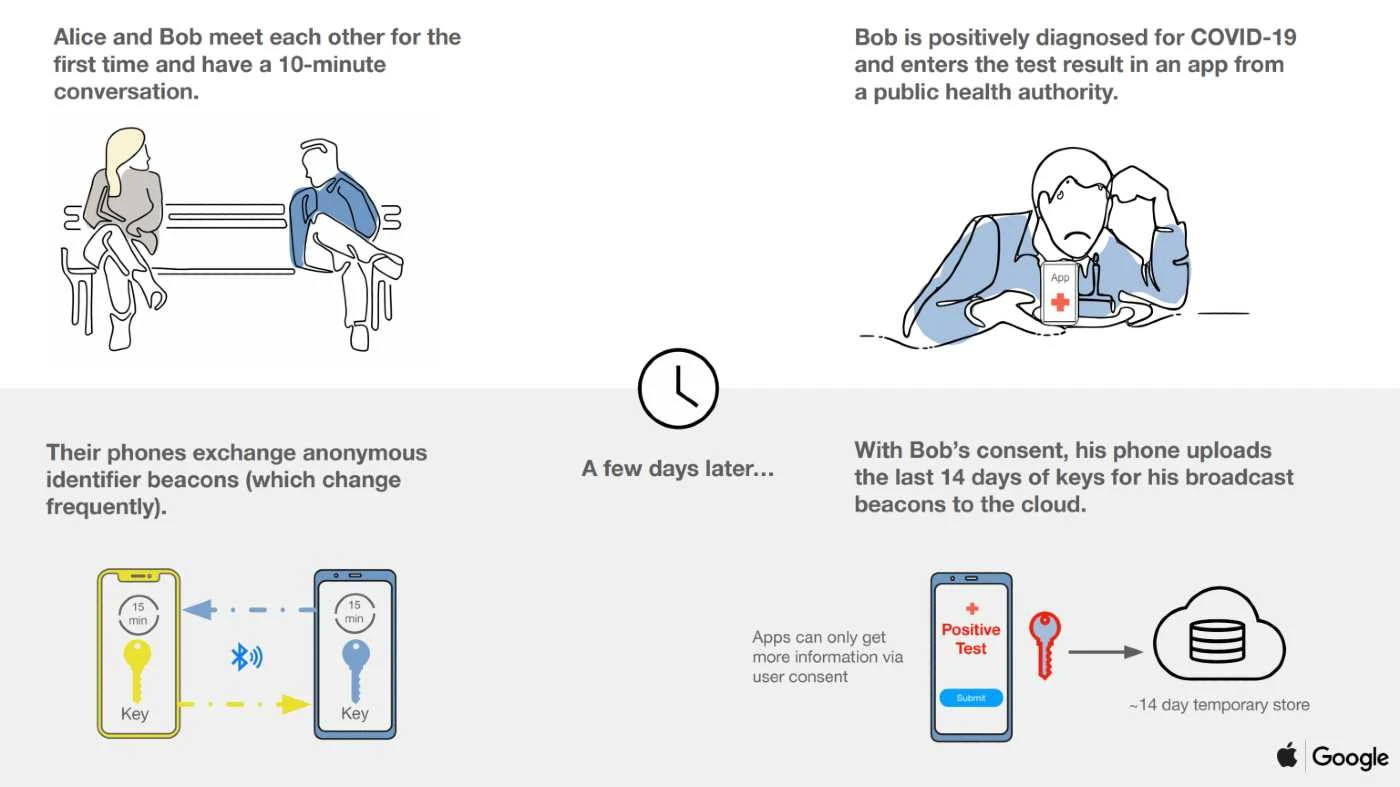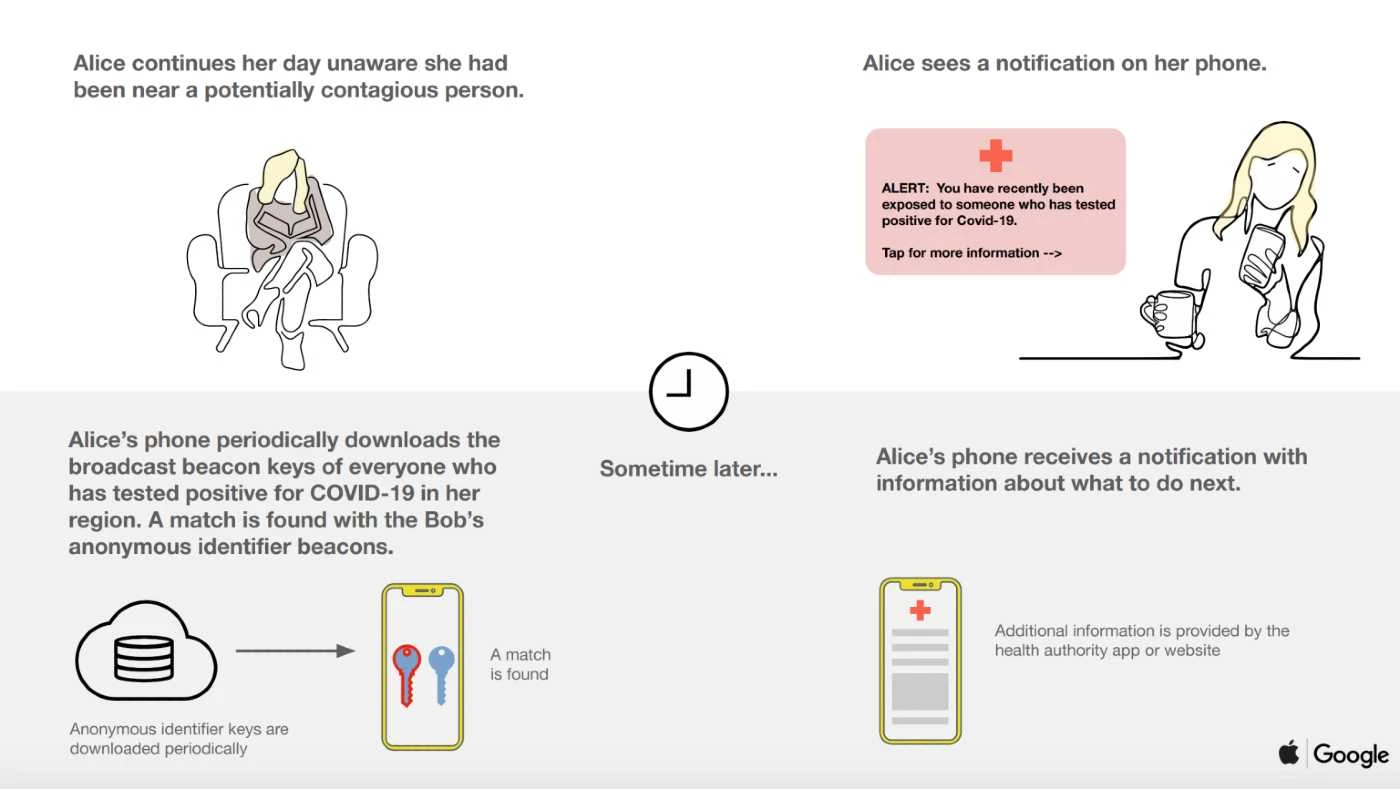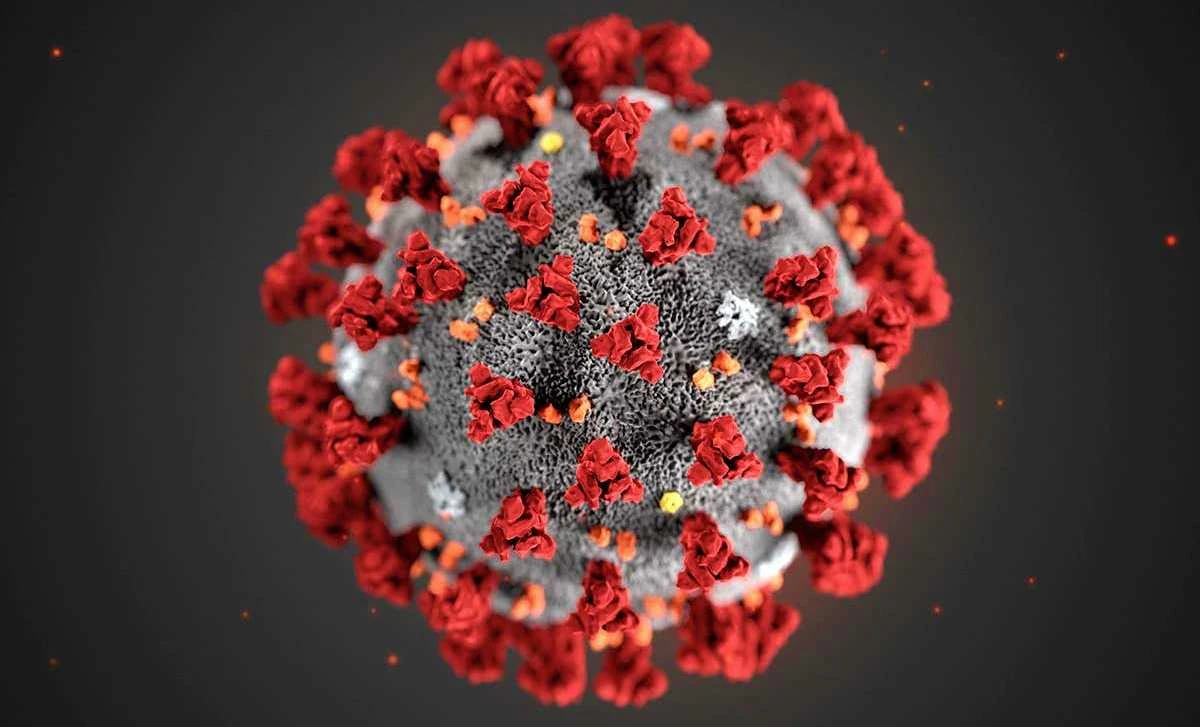Apple and Google are teaming up to enable the use of Bluetooth technology to help governments and health agencies reduce the spread of the virus, with user privacy and security central to the design.
Since COVID-19 can be transmitted through close proximity to affected individuals, public health officials have identified contact tracing as a valuable tool to help contain its spread. A number of leading public health authorities, universities, and NGOs around the world have been doing important work to develop opt-in contact tracing technology.
To further this cause, Apple and Google will be launching a comprehensive solution that includes application programming interfaces (APIs) and operating system-level technology to assist in enabling contact tracing. Given the urgent need, the plan is to implement this solution in two steps while maintaining strong protections around user privacy.
To be effective, the system would require millions of people to opt into the system and trust the technology giants’ safeguards.
Under the plan, smartphones with the contact tracing technology will emit unique Bluetooth signals. Phones within about 6ft can then record anonymous information about their encounters.
People who test positive for coronavirus can opt to send an encrypted list of phones they came near to Apple and Google, which will trigger alerts to potentially exposed users to seek more information.
Public health authorities would need to confirm that a person has tested positive for COVID-19 before they can send on the data.
The logs will be scrambled to keep infected individuals’ data anonymous – even to Apple, Google and contact tracing app makers, the two companies said. They added that their contact tracing system will not track GPS location.
First, in May, both companies will release APIs that enable interoperability between Android and iOS devices using apps from public health authorities. These official apps will be available for users to download via their respective app stores.
Second, in the coming months, Apple and Google will work to enable a broader Bluetooth-based contact tracing platform by building this functionality into the underlying platforms. This is a more robust solution than an API and would allow more individuals to participate, if they choose to opt in, as well as enable interaction with a broader ecosystem of apps and government health authorities.
The two companies have released details of the cryptography specifications they plan to use to safeguard privacy, and details of the role Bluetooth will play.
A Working Example
- Two people are near each other for a period of time. Their phones exchange anonymous identifiers (which change every 15 minutes).
- Later on, one of those people is diagnosed with COVID-19 and enters it into the system via a Public Health Authority app that has integrated the API.
- With an additional consent, the diagnosed user allows his anonymous identifiers for the last 14 days to be transmitted to the system.
- The person they came into contact with has a Public Health app on their phone that downloads the broadcast keys of positive tests and alerts them to a match.
- The app gives them more information on how to proceed from there.





